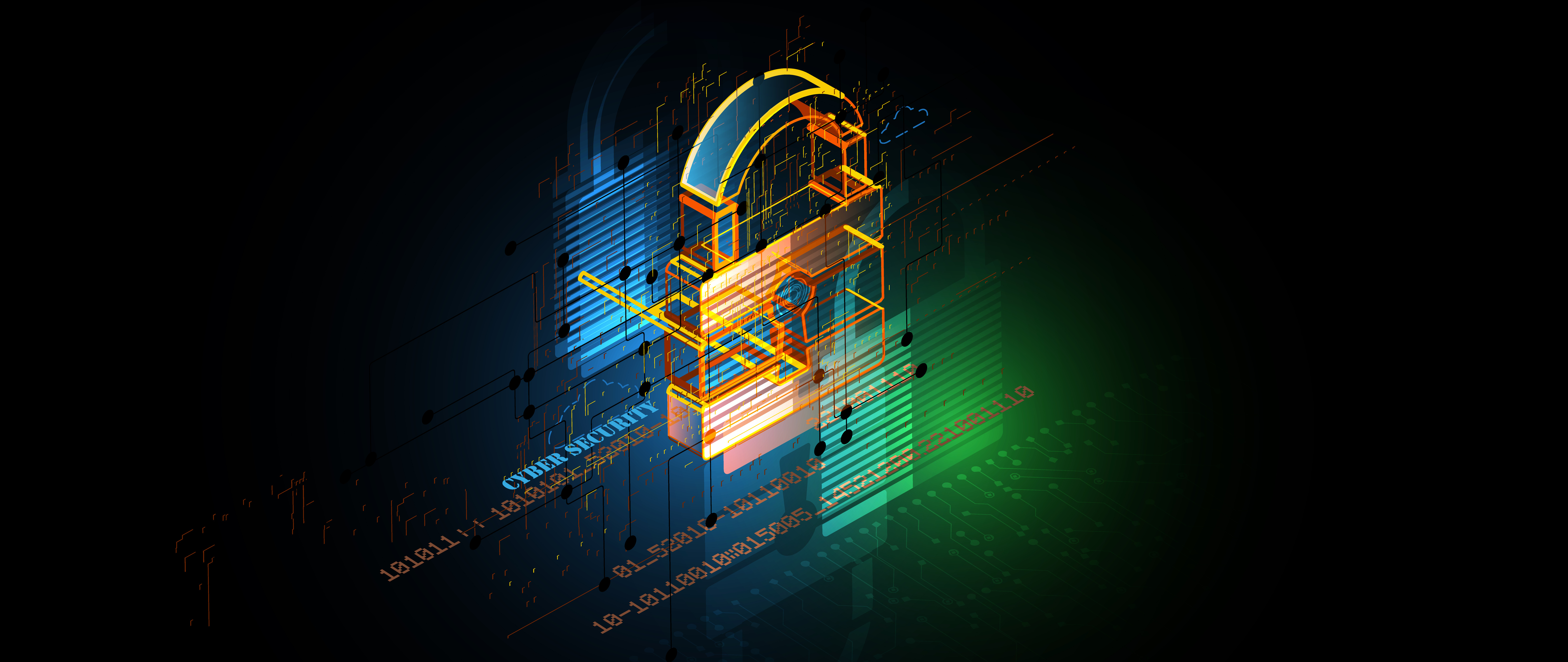Share this
Five Common Challenges Posed by Air Gaps, and How They Can Be Solved
by Christopher Trick on Mar 28, 2023 3:56:13 PM

While air gaps are a reliable means of protecting against cyberthreats, there are several challenges associated with their use that may warrant investing in additional measures to secure computing and network architectures.
In this blog, you'll learn more about what air gaps are, the common challenges they pose, and how cross-domain solutions can help solve these issues.
What is an air gap?
An air gap is a security measure that physically or logically isolates a computer or network from the internet or other unsecured networks.
This is done by creating an air gap, or gap in connectivity, between the computer or network and external networks. Data of different sensitivity levels is kept on different systems or networks.
There are two types of air gaps: physical air gaps and logical air gaps.
In a physical air gap, the computer or network is physically disconnected from all external networks, typically through the removal of network cables, wireless interfaces, or other communication channels.
This makes it impossible for any data to be transferred between the isolated computer or network and external networks, which provides a high level of security against external attacks or data breaches.
In a logical air gap, the computer or network is still physically connected to external networks, but is protected by security mechanisms that prevent any data from passing between the isolated computer or network and external networks.
This may involve using firewalls, access control lists, or other security devices to filter and block all incoming and outgoing network traffic.
Air gaps are often used in environments where sensitive data or systems must be protected from external threats or attacks.
For example, air gaps may be used in military or intelligence networks, financial institutions, or critical infrastructure systems, such as power grids or water treatment plants.

An air gap is a security measure that physically or logically isolates a computer or network from the internet or other unsecured networks. This is done by creating an air gap, or gap in connectivity, between the computer or network and external networks.
What are some common challenges posed by air gaps?
While air gaps can help protect critical data, it also poses several challenges. The five challenges posed by air gaps are:
Security
One of the main challenges of air gaps is maintaining security.
Although physical isolation reduces the risk of external attacks, it does not eliminate them entirely. Attackers can still exploit vulnerabilities by using physical media like USB sticks or by exploiting human errors, such as social engineering or phishing.
For example, a worm can spread through air gaps by infecting USB sticks used to transfer files between computers.
Connectivity and Data Transfer
Air gaps can make it challenging to transfer data between isolated systems and external systems.
This can make it difficult to share important data, update software or apply security patches.
For example, if a computer is not connected to the internet, it cannot download updates or patches from the internet. Similarly, if a system is physically isolated, it may not be able to transfer data to another system that requires it.
Maintenance and Upgrades
Air gaps can also make it challenging to maintain and upgrade computer systems.
Since the system is not connected to the internet, it may not receive automatic updates or patches, which can make it vulnerable to security risks. Additionally, updating the system may require physically connecting it to external networks, which can be time-consuming and may pose security risks.
For example, updating an air-gapped system may require physical access to the computer, which may not be practical or feasible.
Functionality
Air gaps can limit the functionality of computer systems, especially those that rely on external data sources or cloud services.
For example, a computer system that relies on cloud storage may not be able to access its data if it is disconnected from the internet. Similarly, a system that relies on external data sources may not be able to access that data if it is not connected to the appropriate network.
Complexity and Cost
Finally, implementing air gaps can be complex and expensive.
It requires additional hardware and infrastructure to ensure that the system remains isolated from external networks. Additionally, it may require additional personnel to manage the system and maintain security protocols.
For example, implementing air gaps in a large organization may require significant resources, including specialized hardware and software, dedicated personnel, and training for employees.

While air gaps can help protect critical data, it also poses challenges such as security, connectivity and data transfer, maintenance and upgrades, functionality, and complexity and cost.
How can these challenges be solved with a cross-domain solution?
A cross-domain solution (CDS) is a technology that allows the transfer of data between computer systems with different security domains or levels of classification, helping to address some of the challenges posed by air gaps.
Let's take a closer look:
Security
CDS can help address security risks associated with air gaps by providing a secure channel for data transfer between different security domains.
CDS can ensure that data is transferred securely, and access controls are enforced.
For example, a military organization can use a CDS to share classified information between different security domains, such as confidential, secret, and top secret.
Connectivity and Data Transfer
CDS can provide secure connectivity and data transfer between systems with different security domains.
This can enable organizations to share critical data, apply updates and patches, and maintain security protocols.
For example, a hospital can use a CDS to securely transfer patient data between systems with different security domains, such as electronic health records, medical devices, and administrative systems.
Maintenance and Upgrades
CDS can help simplify the maintenance and upgrades of air-gapped systems by providing secure connectivity and data transfer.
CDS can enable remote access and management of systems, allowing organizations to apply updates and patches without physically connecting to the system.
For example, a utility company can use a CDS to remotely manage and update critical infrastructure systems, such as power grids, water treatment plants, and communication networks.
Functionality
CDS can help improve the functionality of air-gapped systems by enabling access to external data sources or cloud services.
CDS can enable secure connectivity and data transfer between systems with different security domains, allowing organizations to leverage external resources while maintaining security protocols.
For example, a financial institution can use a CDS to securely access external financial data sources or cloud services, such as stock market data, trading platforms, and financial analysis tools.
Complexity and Cost
CDS can help simplify the implementation of air gaps by providing a secure and cost-effective alternative to traditional air-gapped systems.
CDS can reduce the complexity and cost of maintaining separate systems for different security domains by enabling secure connectivity and data transfer between them.
For example, a government agency can use a CDS to securely share information between different departments or agencies without the need for physical air gaps, dedicated hardware, or personnel.

A cross-domain solution (CDS) is a technology that allows the transfer of data between computer systems with different security domains or levels of classification, helping to address some of the challenges posed by air gaps.
Where does Trenton Systems come into play?
At Trenton, we are currently working on the next generation of cross-domain solutions with unprecedented communication throughput metrics to reduce air gaps and enable unified network security across multiple domains for military, DoD, and critical infrastructure applications.
Our rack servers provide a secure platform that partitions CPUs individually and allows for independent security domains with independent memory access rules with 400ns latency.
An FPGA communicates with 4th Gen Intel® Xeon® SP CPUs over a UPI bus at 10.4 GT/s. The FPGA isolates data and controls what traffic can communicate to other portions of memory based on sensitivity level.
To learn more when we make things public or for any other updates on our next-gen CDS solutions, sign up below and we'll add you to our CDS VIP list to get the latest updates on features, pricing, and availability.
You'll also receive exclusive use cases, solutions briefs, and product videos before anyone else.
Closing thoughts
While air gaps can provide some level of security, they also pose several challenges, including security risks, connectivity and data transfer issues, maintenance and upgrade difficulties, limited functionality, and increased complexity and cost.
Organizations that implement air gaps must carefully consider these challenges and develop strategies to mitigate them, such as the implementation of cross-domain solutions to ensure that their systems remain secure and functional.
Companies like Trenton Systems provide hardware-based security measures to guard critical information traveling to and from different security domains, guarding sensitive data against interference and/or intrusion at all costs.
Want to learn more? Just reach out to us anytime here.
Team Trenton is at your service. 🇺🇸
Share this
- High-performance computers (42)
- Military computers (38)
- Rugged computers (32)
- Cybersecurity (25)
- Industrial computers (25)
- Military servers (24)
- MIL-SPEC (20)
- Rugged servers (19)
- Press Release (17)
- Industrial servers (16)
- MIL-STD-810 (16)
- 5G Technology (14)
- Intel (13)
- Rack mount servers (12)
- processing (12)
- Computer hardware (11)
- Edge computing (11)
- Rugged workstations (11)
- Made in USA (10)
- Partnerships (9)
- Rugged computing (9)
- Sales, Marketing, and Business Development (9)
- Trenton Systems (9)
- networking (9)
- Peripheral Component Interconnect Express (PCIe) (7)
- Encryption (6)
- Federal Information Processing Standards (FIPS) (6)
- GPUs (6)
- IPU (6)
- Joint All-Domain Command and Control (JADC2) (6)
- Server motherboards (6)
- artificial intelligence (6)
- Computer stress tests (5)
- Cross domain solutions (5)
- Mission-critical servers (5)
- Rugged mini PCs (5)
- AI (4)
- BIOS (4)
- CPU (4)
- Defense (4)
- Military primes (4)
- Mission-critical systems (4)
- Platform Firmware Resilience (PFR) (4)
- Rugged blade servers (4)
- containerization (4)
- data protection (4)
- virtualization (4)
- Counterfeit electronic parts (3)
- DO-160 (3)
- Edge servers (3)
- Firmware (3)
- HPC (3)
- Just a Bunch of Disks (JBOD) (3)
- Leadership (3)
- Navy (3)
- O-RAN (3)
- RAID (3)
- RAM (3)
- Revision control (3)
- Ruggedization (3)
- SATCOM (3)
- Storage servers (3)
- Supply chain (3)
- Tactical Advanced Computer (TAC) (3)
- Wide-temp computers (3)
- computers made in the USA (3)
- data transfer (3)
- deep learning (3)
- embedded computers (3)
- embedded systems (3)
- firmware security (3)
- machine learning (3)
- Automatic test equipment (ATE) (2)
- C6ISR (2)
- COTS (2)
- COVID-19 (2)
- CPUs (2)
- Compliance (2)
- Compute Express Link (CXL) (2)
- Computer networking (2)
- Controlled Unclassified Information (CUI) (2)
- DDR (2)
- DDR4 (2)
- DPU (2)
- Dual CPU motherboards (2)
- EW (2)
- I/O (2)
- Military standards (2)
- NVIDIA (2)
- NVMe SSDs (2)
- PCIe (2)
- PCIe 4.0 (2)
- PCIe 5.0 (2)
- RAN (2)
- SIGINT (2)
- SWaP-C (2)
- Software Guard Extensions (SGX) (2)
- Submarines (2)
- Supply chain security (2)
- TAA compliance (2)
- airborne (2)
- as9100d (2)
- chassis (2)
- data diode (2)
- end-to-end solution (2)
- hardware security (2)
- hardware virtualization (2)
- integrated combat system (2)
- manufacturing reps (2)
- memory (2)
- mission computers (2)
- private 5G (2)
- protection (2)
- secure by design (2)
- small form factor (2)
- software security (2)
- vRAN (2)
- zero trust (2)
- zero trust architecture (2)
- 3U BAM Server (1)
- 4G (1)
- 4U (1)
- 5G Frequencies (1)
- 5G Frequency Bands (1)
- AI/ML/DL (1)
- Access CDS (1)
- Aegis Combat System (1)
- Armed Forces (1)
- Asymmetric encryption (1)
- C-RAN (1)
- COMINT (1)
- Cloud-based CDS (1)
- Coast Guard (1)
- Compliance testing (1)
- Computer life cycle (1)
- Containers (1)
- D-RAN (1)
- DART (1)
- DDR5 (1)
- DMEA (1)
- Data Center Modular Hardware System (DC-MHS) (1)
- Data Plane Development Kit (DPDK) (1)
- Defense Advanced Research Projects (DARP) (1)
- ELINT (1)
- EMI (1)
- EO/IR (1)
- Electromagnetic Interference (1)
- Electronic Warfare (EW) (1)
- FIPS 140-2 (1)
- FIPS 140-3 (1)
- Field Programmable Gate Array (FPGA) (1)
- Ground Control Stations (GCS) (1)
- Hardware-based CDS (1)
- Hybrid CDS (1)
- IES.5G (1)
- ION Mini PC (1)
- IP Ratings (1)
- IPMI (1)
- Industrial Internet of Things (IIoT) (1)
- Industry news (1)
- Integrated Base Defense (IBD) (1)
- LAN ports (1)
- LTE (1)
- Life cycle management (1)
- Lockheed Martin (1)
- MIL-S-901 (1)
- MIL-STD-167-1 (1)
- MIL-STD-461 (1)
- MIL-STD-464 (1)
- MOSA (1)
- Multi-Access Edge Computing (1)
- NASA (1)
- NIC (1)
- NIC Card (1)
- NVMe (1)
- O-RAN compliant (1)
- Oil and Gas (1)
- Open Compute Project (OCP) (1)
- OpenRAN (1)
- P4 (1)
- PCIe card (1)
- PCIe lane (1)
- PCIe slot (1)
- Precision timestamping (1)
- Product life cycle (1)
- ROM (1)
- Raytheon (1)
- Remotely piloted aircraft (RPA) (1)
- Rugged computing glossary (1)
- SEDs (1)
- SIM Card (1)
- Secure boot (1)
- Sensor Open Systems Architecture (SOSA) (1)
- Small form-factor pluggable (SFP) (1)
- Smart Edge (1)
- Smart NIC (1)
- SmartNIC (1)
- Software-based CDS (1)
- Symmetric encryption (1)
- System hardening (1)
- System hardening best practices (1)
- TME (1)
- Tech Partners (1)
- Total Memory Encryption (TME) (1)
- Transfer CDS (1)
- USB ports (1)
- VMEbus International Trade Association (VITA) (1)
- Vertical Lift Consortium (VLC) (1)
- Virtual machines (1)
- What are embedded systems? (1)
- Wired access backhaul (1)
- Wireless access backhaul (1)
- accredidation (1)
- aerospace (1)
- air gaps (1)
- airborne computers (1)
- asteroid (1)
- authentication (1)
- autonomous (1)
- certification (1)
- cognitive software-defined radios (CDRS) (1)
- command and control (C2) (1)
- communications (1)
- cores (1)
- custom (1)
- customer service (1)
- customer support (1)
- data linking (1)
- data recording (1)
- ethernet (1)
- full disk encryption (1)
- hardware monitoring (1)
- heat sink (1)
- hypervisor (1)
- in-house technical support (1)
- input (1)
- integrated edge solution (1)
- international business (1)
- licensed spectrum (1)
- liquid cooling (1)
- mCOTS (1)
- microelectronics (1)
- missile defense (1)
- mixed criticality (1)
- moving (1)
- multi-factor authentication (1)
- network slicing (1)
- neural networks (1)
- new headquarters (1)
- next generation interceptor (1)
- non-volatile memory (1)
- operating system (1)
- output (1)
- outsourced technical support (1)
- post-boot (1)
- pre-boot (1)
- private networks (1)
- public networks (1)
- radio access network (RAN) (1)
- reconnaissance (1)
- rugged memory (1)
- secure flash (1)
- security (1)
- self-encrypting drives (SEDs) (1)
- sff (1)
- software (1)
- software-defined radios (SDRs) (1)
- speeds and feeds (1)
- standalone (1)
- storage (1)
- systems (1)
- tactical wide area networks (1)
- technical support (1)
- technology (1)
- third-party motherboards (1)
- troposcatter communication (1)
- unlicensed spectrum (1)
- volatile memory (1)
- vpx (1)
- zero trust network (1)
- January 2025 (1)
- November 2024 (1)
- October 2024 (1)
- August 2024 (1)
- July 2024 (1)
- May 2024 (1)
- April 2024 (3)
- February 2024 (1)
- November 2023 (1)
- October 2023 (1)
- July 2023 (1)
- June 2023 (3)
- May 2023 (7)
- April 2023 (5)
- March 2023 (7)
- December 2022 (2)
- November 2022 (6)
- October 2022 (7)
- September 2022 (8)
- August 2022 (3)
- July 2022 (4)
- June 2022 (13)
- May 2022 (10)
- April 2022 (4)
- March 2022 (11)
- February 2022 (4)
- January 2022 (4)
- December 2021 (1)
- November 2021 (4)
- September 2021 (2)
- August 2021 (1)
- July 2021 (2)
- June 2021 (3)
- May 2021 (4)
- April 2021 (3)
- March 2021 (3)
- February 2021 (8)
- January 2021 (4)
- December 2020 (5)
- November 2020 (5)
- October 2020 (4)
- September 2020 (4)
- August 2020 (6)
- July 2020 (9)
- June 2020 (11)
- May 2020 (13)
- April 2020 (8)
- February 2020 (1)
- January 2020 (1)
- October 2019 (1)
- August 2019 (2)
- July 2019 (2)
- March 2019 (1)
- January 2019 (2)
- December 2018 (1)
- November 2018 (2)
- October 2018 (5)
- September 2018 (3)
- July 2018 (1)
- April 2018 (2)
- March 2018 (1)
- February 2018 (9)
- January 2018 (27)
- December 2017 (1)
- November 2017 (2)
- October 2017 (3)
/Trenton%20Systems%20Circular%20Logo-3.png?width=50&height=50&name=Trenton%20Systems%20Circular%20Logo-3.png)

No Comments Yet
Let us know what you think